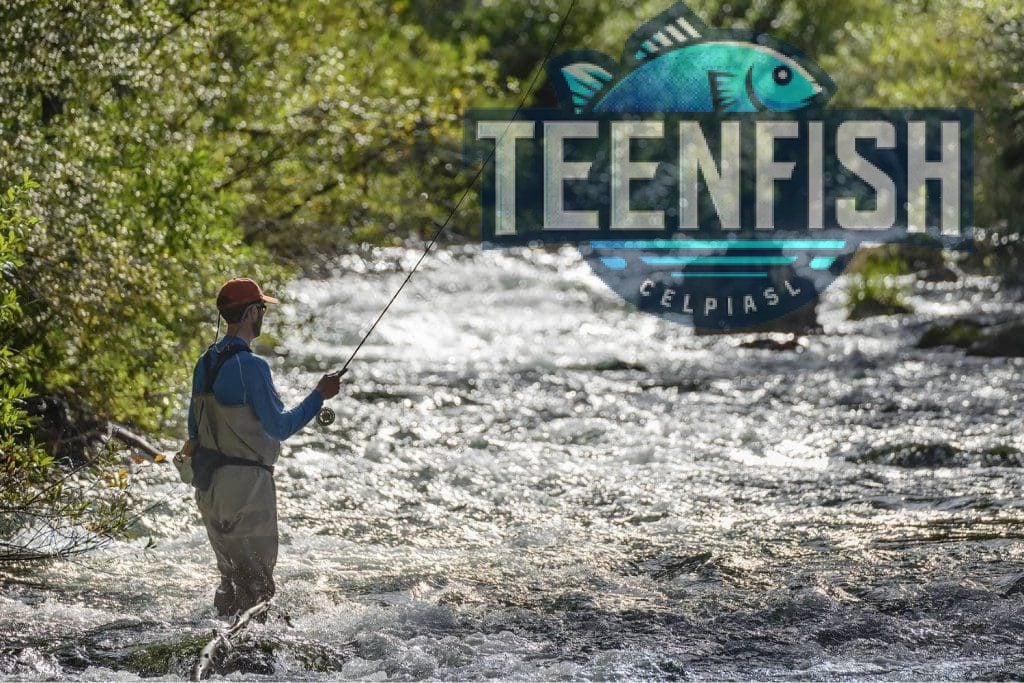Fishing enthusiasts flock to South Dakota’s pristine lakes, rivers, and streams each year, drawn by the promise of world-class angling opportunities. In 2024, the state’s diverse fisheries continue to thrive, offering unforgettable experiences for both resident and visiting anglers. However, to ensure the sustainability of these precious resources, South Dakota implements comprehensive fishing regulations through annually updated handbooks, administrative rules, and state laws.
This in-depth guide provides a thorough overview of the key fishing regulations in South Dakota for 2024, covering essential topics such as licensing requirements, possession and transportation rules, statewide limits, special regulations, methods of take, and aquatic invasive species containment. By understanding and adhering to these regulations, anglers can enjoy successful fishing adventures while contributing to the long-term health of South Dakota’s fisheries.
Fishing Opportunities in South Dakota
South Dakota boasts a wide array of fishing opportunities, catering to anglers of all skill levels and preferences. The state’s 400+ lakes and reservoirs are renowned for their exceptional warm water fishing, with sought-after species like walleye, bass, pike, and panfish abundant in many waters. Trout enthusiasts can explore the cold water fisheries found in the Black Hills streams and stocked lakes in the northeastern region.
For those seeking trophy catches, the iconic Missouri River reservoirs, such as Lake Francis Case and Lake Oahe, are prime destinations. These vast bodies of water are home to impressive catfish, walleye, smallmouth bass, pike, and more, offering anglers the chance to land the fish of a lifetime.
The South Dakota Game, Fish and Parks (GFP) is responsible for managing the state’s fisheries and regulating fishing activities. Each year, they release an updated South Dakota Fishing Handbook, which outlines the current seasons, limits, and rules. Anglers can access this essential resource online or at license vendors throughout the state.
While most fishing regulations in 2024 remain consistent with the previous year, it is crucial for anglers to review the latest handbook to ensure they are aware of any changes and can fish in compliance with the most up-to-date rules.
Licensing Requirements
Before casting a line in South Dakota’s waters, anglers must obtain the appropriate fishing license. Resident anglers over the age of 18 and nonresidents aged 16 and older are required to have a valid license, with some exceptions:
Residents exempt from licensing:
- Youth under 18
- Residents born before January 1, 1959, with proof of age and residency
- Patients of state or veterans nursing homes while fishing with the facility
- Members of the armed forces home on leave
Nonresidents exempt from licensing:
- Youth under 16 when accompanied by a licensed angler
South Dakota offers several license options for both residents and nonresidents in 2024:
- Resident annual fishing license: $28
- Nonresident annual fishing license: $67
- Other licenses (1-day, 3-day, senior, disabled, armed forces, etc.): Prices range from $8 for a resident 1-day license to $92 for a nonresident annual license
Certain fishing methods, such as using setlines or hoop nets, may require additional licensing. It is essential to check the regulations for specific gear requirements.
In addition to the fishing license, anglers must purchase a $10 habitat stamp to support conservation efforts. This stamp is required for all license purchases, with the exception of the 1-day nonresident license.
Licenses and stamps can be conveniently purchased online through the GFP website or from authorized vendors located throughout South Dakota.
Possession and Transportation Regulations
South Dakota’s fishing regulations not only govern daily harvest limits but also dictate how anglers can possess and transport their catch:
- Anglers are prohibited from possessing more than one limit of each species while actively fishing or in transit, with some exceptions for charter fishing and fish processing.
- During ice fishing, anglers can only possess their limit between midnight and one hour before sunrise if they are occupying their fishing shelter.
- Bait fish cannot be transported in water away from the water body where they were captured. The fishing handbook outlines the legal bait fish species.
Statewide Limits
To ensure the sustainability of fish populations, South Dakota implements statewide daily harvest and possession limits for popular game fish species:
Walleye, Sauger, and Hybrids (Saugeye)
| Location | Daily Limit | Possession Limit |
|---|---|---|
| Black Hills | 3 | 3 |
| All other waters | 5 | 10 |
Largemouth and Smallmouth Bass
| Minimum Length | Daily Limit | Possession Limit |
|---|---|---|
| No minimum | 5 | 10 |
Channel and Flathead Catfish
| Minimum Length | Daily Limit | Possession Limit |
|---|---|---|
| No minimum | 5 | 10 |
Northern Pike
| Minimum Length | Daily Limit | Possession Limit |
|---|---|---|
| No minimum | 5 | 10 |
Trout (Brown, Rainbow, Brook, Lake, and Splake)
| Location | Minimum Length | Daily Limit | Possession Limit |
|---|---|---|---|
| Black Hills Streams | <12″ | 0 | 0 |
| Black Hills Streams | ≥12″ | 5 trout combined | 5 trout combined |
| All other streams/lakes | No minimum | 5 trout combined | 10 trout combined |
Additional limits apply to other species, such as muskellunge, paddlefish, rock bass, white bass, yellow perch, crappie, sunfish, and bullheads. Anglers should consult the fishing handbook for a complete list of statewide limits.
On border waters shared with neighboring states, special limits may be in effect based on reciprocal agreements. The annually updated fishing handbook provides detailed information for waters like the Missouri River reservoirs and the Red and Bois de Sioux rivers.
Special Regulations
In addition to statewide regulations, South Dakota implements special rules on certain waters to achieve specific management goals:
- Lake Francis Case & Lake Sharpe: A 15-inch minimum length limit for walleye is in place to produce larger fish. The daily limit is 5, and the possession limit is 10.
- Lake Mitchell (Davison County): Largemouth and smallmouth bass have a 15-inch minimum length limit. The daily limit is 5, and the possession limit is 10.
- Rapid Creek (Pennington County): This unique wild brown trout fishery is managed as a catch-and-release only trout fishing area.
- Richmond Lake (Brown County): To improve recruitment, largemouth and smallmouth bass harvest is prohibited during the spawn from May 1 to June 15. Catch-and-release fishing is allowed during this period.
- Belle Fourche Reservoir (Butte County): Walleye under 20 inches have a daily limit of 1 fish to protect spawning stock. For walleye over 20 inches, the daily limit is 5, with only one fish allowed over 28 inches. The possession limit is 10, with only one fish over 28 inches.
Anglers should carefully review the special regulations for specific waters in the annually updated fishing handbook before venturing out to unfamiliar locations.
Methods of Take
South Dakota allows several legal and ethical methods for harvesting fish:
- Open water fishing: Up to 2 poles with hooks per licensed angler
- Ice fishing: Up to 4 poles per angler
- Bow and arrow or crossbow (with restrictions)
- Underwater spearing through the ice (with restrictions)
However, certain methods are prohibited and considered illegal:
- Snagging fish with hooks
- Spearing fish outside of designated underwater ice spearing seasons
- Using firearms, air guns, explosives, chemicals, hands, nets, seines, traps, or snare wires and hooks
Exceptions for snagging paddlefish and netting bait fish are allowed under strict regulations outlined in the annual fishing handbook.
Aquatic Invasive Species Regulations
Aquatic invasive species (AIS), such as zebra mussels and Asian carp, pose a significant threat to South Dakota’s waters. To prevent the spread of AIS, the state has implemented containment regulations that restrict the transport of water, fish, and aquatic bait.
In waters designated as AIS Positive, anglers and recreational users must:
- Clean, drain, and dry boats and equipment after use
- Drain bait buckets, livewells, and other water before leaving the area
- Dispose of unused bait in the trash, not in the water
Additional regulations prohibit the importation and release of prohibited bait fish species.
As of 2024, no new AIS infestations have been reported in South Dakota. However, containment strategies remain crucial to minimize the ecological and economic impacts of potential new introductions.
Additional Information
For specific questions or the most up-to-date information on South Dakota’s fishing regulations in 2024, anglers can contact the GFP at 605-223-7660 or visit the following resources:
- 2024 Fishing Handbook – Comprehensive guide to regulations, seasons, limits, and more
- Administrative Rules – Legally enforceable fishing rules
- SD Codified Laws – State statutes related to fishing
While this guide provides a thorough overview of the key fishing regulations in South Dakota for 2024, anglers must consult the annually updated fishing handbook for the most comprehensive and current information before heading out on the water.
By understanding and following these regulations, anglers can enjoy the thrill of the catch while contributing to the long-term sustainability of South Dakota’s world-class fisheries.
Do I need a fishing license to fish in South Dakota?
Resident anglers over 18 and nonresidents 16 and older generally require a fishing license, with some exceptions for youth, seniors, and military personnel.
Where can I purchase a fishing license in South Dakota?
Licenses can be purchased online through the GFP website or from authorized vendors throughout the state.
What is the daily limit for walleye in South Dakota?
The daily limit for walleye is 5 in most waters, with a possession limit of 10. However, some waters, like the Black Hills, have a daily limit of 3 and a possession limit of 3.
Are there any special regulations I should be aware of when fishing in South Dakota?
Yes, certain waters have special regulations in place to manage fish populations. These may include minimum length limits, catch-and-release requirements, or seasonal restrictions. Always consult the annually updated fishing handbook for specific regulations.
What should I do to prevent the spread of aquatic invasive species?
Clean, drain, and dry your boat and equipment after use, dispose of unused bait in the trash, and never transport water, fish, or bait from one water body to another.


